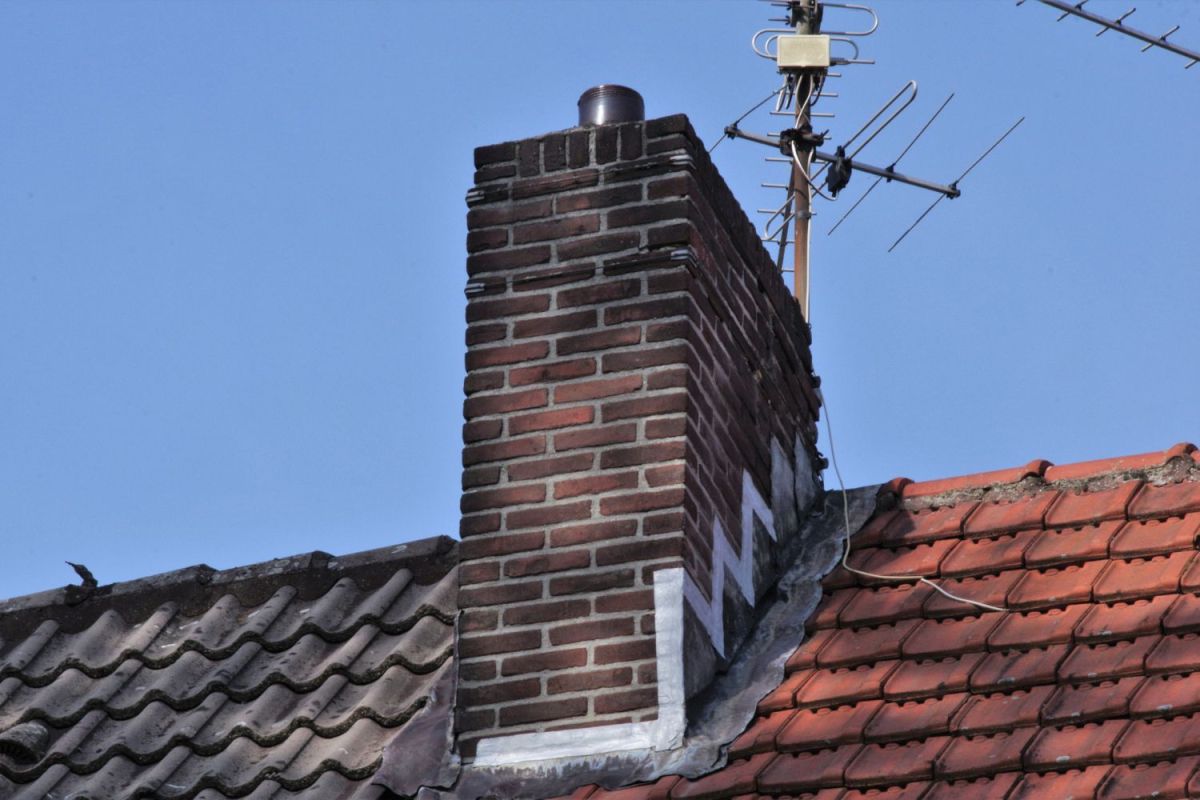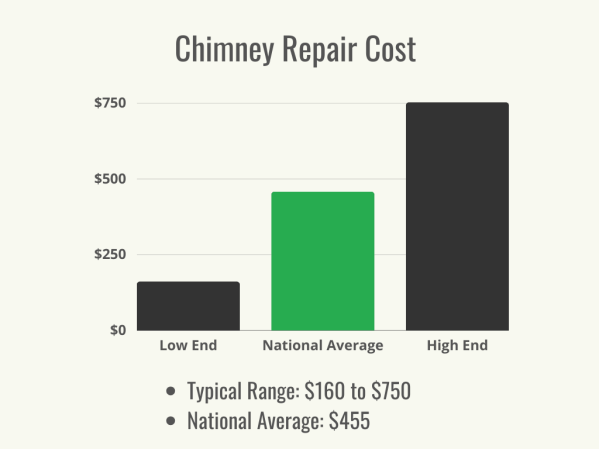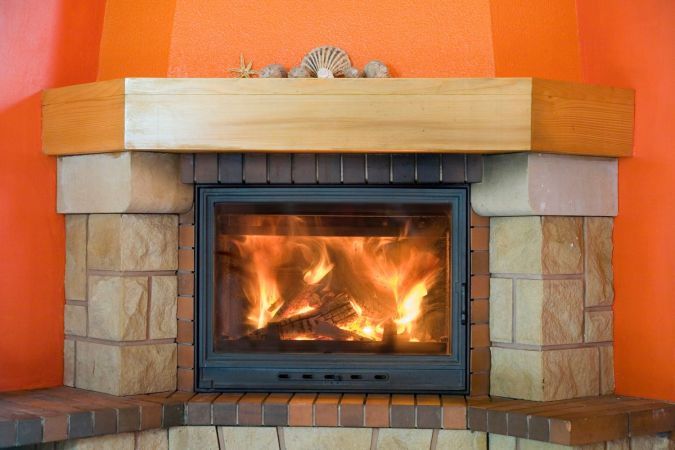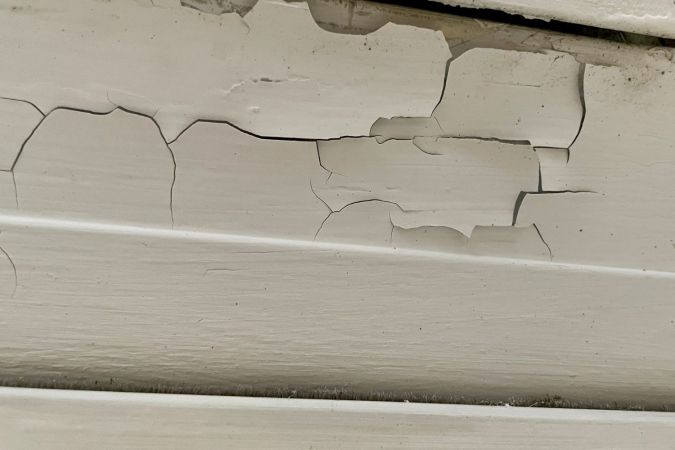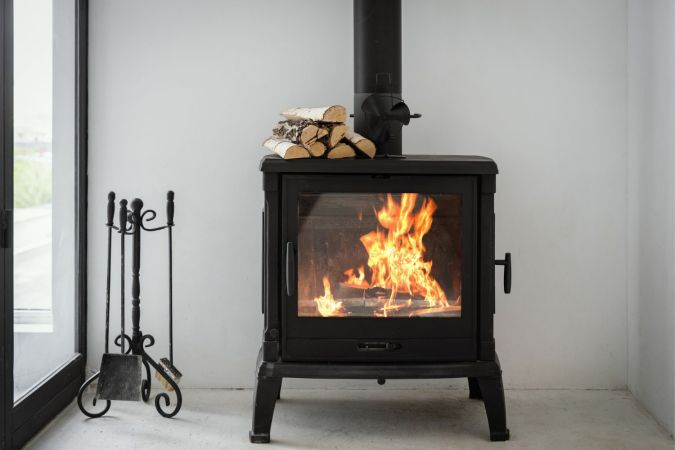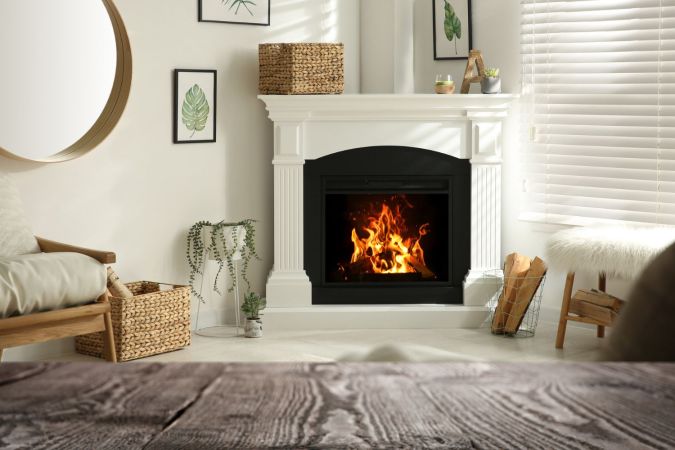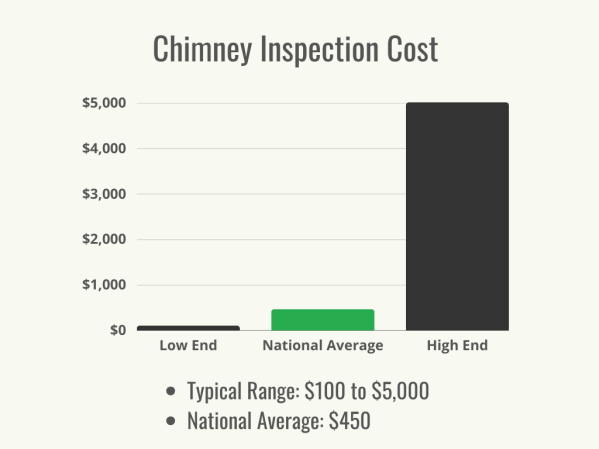We may earn revenue from the products available on this page and participate in affiliate programs. Learn More ›
Highlights
- Chimney removal costs between $1,000 and $10,000, with homeowners nationwide paying an average of $4,500.
- The total cost of chimney removal will depend on factors like the size, height, location, and accessibility of the chimney; the installation of steel beam supports; the cost of labor, permits, and inspections; and cleanup costs.
- A homeowner may need chimney removal if they’re planning a home renovation or upgrade or if they notice damage to the stack or fireplace, moisture issues, safety hazards, or extensive energy loss.
- Removing a chimney is a difficult task, and homeowners who attempt to DIY the project risk injuring themselves or affecting the structural integrity of the home; for this reason, homeowners are advised to hire a professional for chimney removal.
A fireplace is a great feature in any home, allowing the homeowner and residents to build a small, comforting fire to help keep warm and cozy during the winter months. However, over time the fireplace and chimney will start to show signs of wear, like loose or crumbling mortar. If the chimney structure is not repaired or repointed (where decayed mortar is replaced with new mortar to strengthen the chimney) regularly, then the worsening condition of the structure can lead the chimney to collapse, putting the residents of the home at risk.
If the chimney is rarely used or the homeowner is looking to upgrade to a more efficient fireplace, then it’s recommended that they remove the old chimney before it can cause any issues. According to Angi and HomeAdvisor, the average cost to remove a chimney is about $4,500, though it can range from just $1,000 all the way up to $10,000, depending on the chimney size, height, location, accessibility, and more. Homeowners can use this guide to learn more about chimney removal services and to help put together an accurate budget that accounts for the various factors involved in calculating the chimney removal cost.
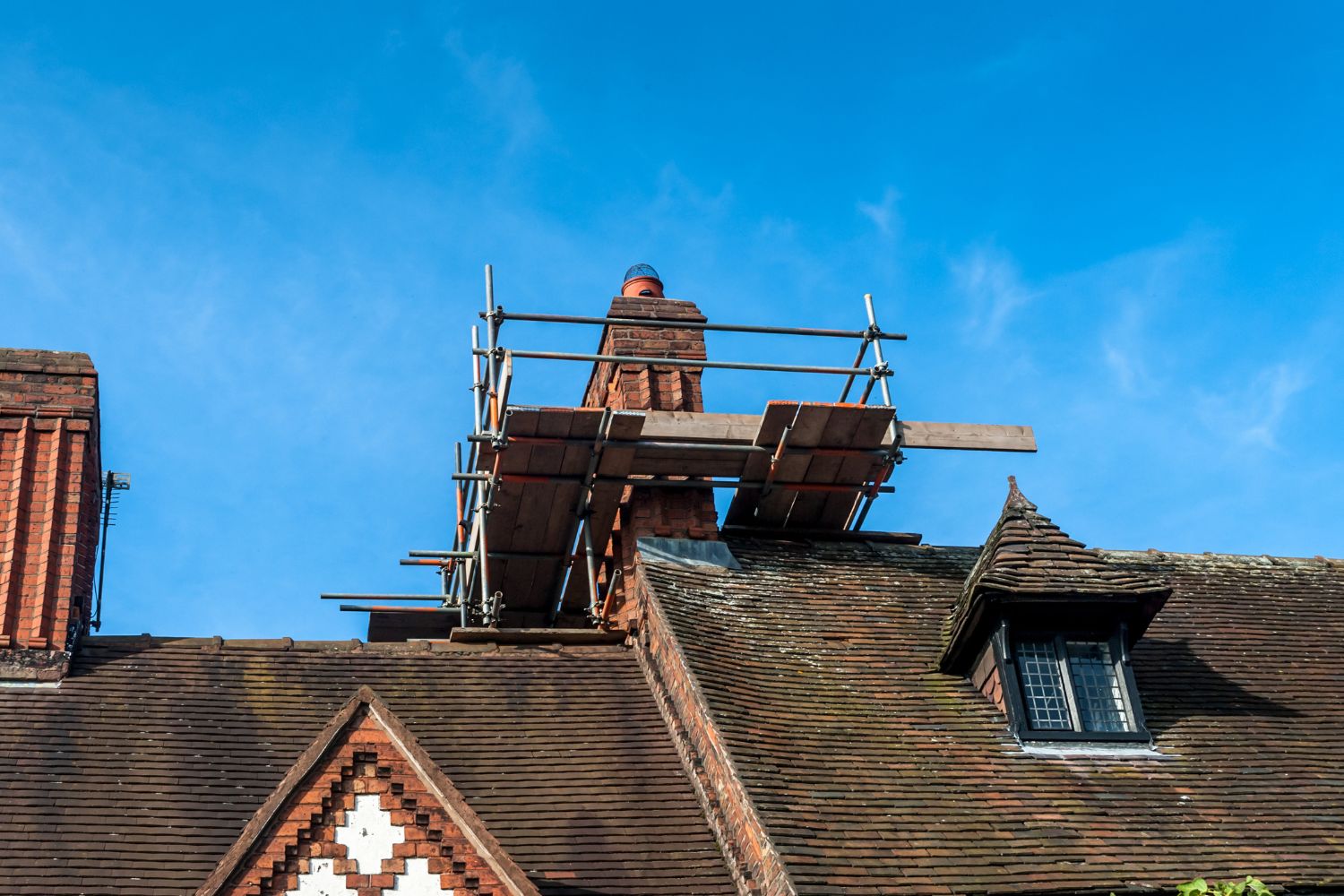
Factors in Calculating Chimney Removal Cost
The cost to remove a chimney is affected by a range of factors, including cleanup, local labor rates, permit fees, inspection fees, chimney location, and accessibility, as well as the size and height of the chimney structure. With that in mind, it’s essential that homeowners find out more about chimney removal before deciding on an appropriate course of action and budget for this project.
Chimney Size and Height
Given that chimney removal is typically completed by dismantling the chimney structure brick by brick from the top to the bottom, it will come as no surprise that the size and height of the chimney are important factors when homeowners are determining the cost of the project. A thin, short chimney in a single-story home will cost less to remove than a broad chimney that runs from the basement to the roof of the home.
On average, chimney removal will cost about $25 to $50 per vertical linear foot. This means that the homeowner can expect to pay about $525 to $1,400 for the removal of a small chimney stack in an average 2-story home, assuming the house falls between 18 and 25 feet in height. This is because a chimney must extend at least 3 feet higher than the point where it exits the roof. However, homeowners will want to note that this cost range does not account for other factors, like steel beam support, permits, cleanup, or any related repairs.
Chimney Location and Accessibility
The chimney location, accessibility, and fireplace type can affect the cost of the chimney removal project. Indoor chimneys are more expensive to remove than outdoor chimneys because they are more difficult to access and tend to require additional work, like the installation of steel beam supports. Outdoor chimneys are typically easier to remove, leading to lower labor rates.
The location and accessibility of the chimney stack can also impact the chimney removal cost. Chimney stacks that are located near the eaves of the home are generally easier and less costly to remove than those that sit at the peak of the roof. The type of fireplace can also influence the cost of the job. For example, simple wood stoves are typically more affordable to remove than electric or gas fireplace inserts.
| Fireplace Type | Average Cost |
| Electric or gas fireplace insert | $500 to $2,500 |
| Outdoor fireplace | $500 to $2,000 |
| Ventless fireplace | $750 to $1,500 |
| Wood stove | $500 to $1,000 |
Steel Beam Support
During the removal of a fireplace and chimney system, the demolition crew will gradually take apart the chimney stack and disconnect it from surrounding support structures. However, this work can put strain on the existing supports, leading to structural damage if the project is not properly managed.
Experienced chimney demolition crews will be able to recognize any potential problems and take action to install steel beam supports. The cost of these steel beam supports can range from about $100 to $400 per foot. If the home has a broad chimney stack that takes up a lot of space or if the chimney structure is acting as a structural support in the home, then it’s likely that steel beam supports will be required.
Labor
Due to the hazards posed by a potential chimney stack collapse, it’s important for a homeowner to hire a structural engineer for a professional consultation before the chimney removal crew begins the project. Hiring a structural engineer for these purposes will typically cost about $500. On top of this cost, the homeowner will need to hire a professional chimney demolition crew who have the knowledge, experience, and skill to safely remove the chimney.
While local labor rates can fluctuate depending on the geographic location, homeowners can expect to pay about $50 per hour, per worker for a chimney removal crew. In most cases, the demolition crew will have at least two to three workers, so this means that the labor rates for chimney removal start at about $100 to $150 per hour.
Permits and Inspections
Chimney removal is a dangerous project that requires careful planning and execution to complete safely. Depending on the local regulations, the project may require a permit and a follow-up inspection before the job is considered safe and up to code. Homeowners will want to speak to professional chimney removal experts to determine if the demolition company will be handling the permit acquisition or if this responsibility will be left to the homeowner.
The average cost of a chimney removal permit ranges from just $20 to $150. After the removal of the chimney, there is a chance that the homeowner will need to pay for an inspection to verify that the chimney was removed safely and that any additional supports were installed properly.
Cleanup
Cleanup may seem like the final stage of the project, but there is actually a lot of debris produced during a chimney removal, so it’s a good idea for a homeowner to have a dumpster on site for the demolition crew. In some cases, the demolition crew will have their own dumpster, but that doesn’t mean that it comes free. Homeowners will want to check the cost breakdown to find out how much the dumpster and material disposal fees come out to before agreeing to hire a professional chimney removal company.
If the cost for the dumpster and material disposal is too high, it may be beneficial for a homeowner to look into local garbage collection companies to find a more reasonable rate. The average construction dumpster rental ranges from about $300 to $500 per week, while the cost to remove construction waste ranges from $100 to $600. Homeowners will want to keep in mind that depending on the local construction waste disposal rates, they may end up paying up to $1,300 to dispose of the contents of a 20-yard dumpster.
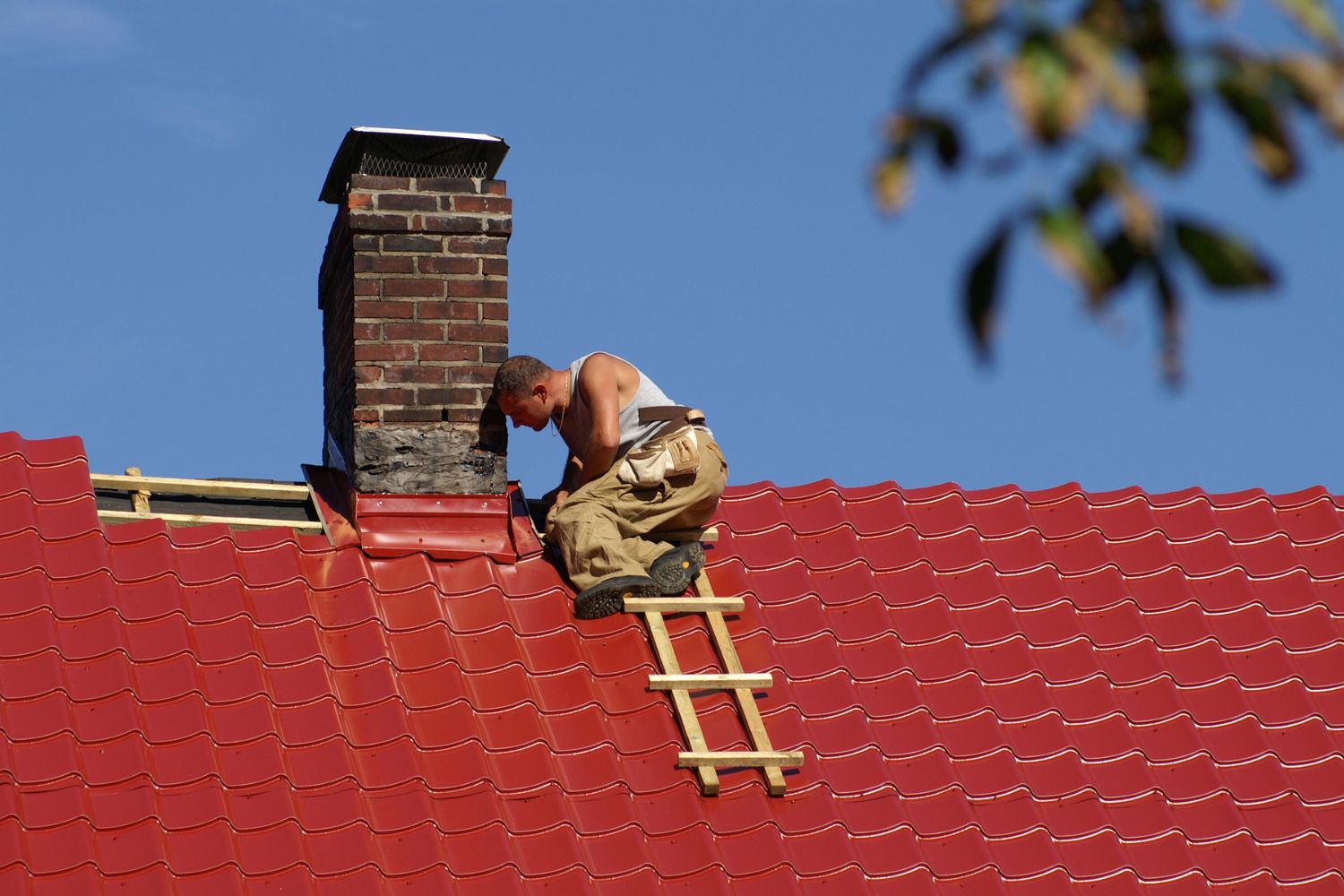
Additional Costs and Considerations
Chimney removal isn’t a simple project, so there may be additional costs that come up before, during, or after the project that fall outside of the original cost factors. This can include costs for asbestos removal, electrical work, or related repairs. To ensure that there aren’t any surprises, it’s a good idea for homeowners to speak to the chimney removal experts prior to the start of the project to find out if there are any existing issues that may affect the cost.
Removal vs. Rebuilding a Chimney
Not every chimney removal project is undertaken because the fireplace is underutilized. Sometimes the fireplace and chimney system are in good condition but the position of the fireplace or chimney stack may affect the layout of the home. In these situations, the homeowner may choose to have the chimney removed and rebuilt in a new location.
- Chimney removal costs about $4,500 on average but can range from $1,000 to $10,000, depending on several key factors and cost considerations. This project involves removing the existing chimney, disposing of the materials, and patching or repairing the framework, drywall, ceilings, walls, and roof.
- Rebuilding a chimney is a more involved project. The homeowner will need to budget for the chimney removal cost but will also need to leave room in the budget for the chimney rebuilding cost. The average cost to rebuild a chimney stack is $500 to $3,500.
Prefabricated vs. Masonry Chimney Removal
The type of fireplace and chimney can affect the cost of the chimney removal project. Prefabricated fireplace and chimney systems will typically cost less to remove or replace due to the material used in the construction of the chimney. This type of chimney is generally made of metal, wood, insulation, and fire-resistant glass, with very little masonry involved.
It will cost more to remove and haul away the materials that make up a masonry chimney because of the significant weight difference between prefabricated and masonry chimney structures. Masonry chimneys are typically made with brick, stone, or concrete, increasing the effort it takes to dismantle the structure but also increasing the disposal costs.
Asbestos Removal
Asbestos was widely used as an insulating material in home construction from the early 1940s through to the early 1980s. If the home was built during this period and has not previously undergone any asbestos removal or remediation, then there is a chance that the chimney removal project will not be able to be completed until the asbestos insulation is removed.
Asbestos poses a significant risk to residents and workers, so before proceeding with the chimney removal project, the homeowner will need to hire asbestos removal professionals to safely remove asbestos insulation. Asbestos removal costs range from about $200 to $700 per hour, which can quickly eat into the chimney removal budget.
Related Repairs
Removing a chimney that extends down through the interior of the home is a complicated process that can have a significant impact on the surrounding area. During and after chimney removal, there may be a number of repairs that need to be completed to finish the project, including patching the roof, rebuilding framework, installing steel support beams, replacing drywall, and repairing or replacing roof flashing.
Before finalizing the project budget, homeowners will want to speak to the chimney removal expert to get a general idea of the possible costs involved with repairing the walls, ceilings, and roof of the home. The following table shows some common repairs and their average costs.
| Type of Repair | Average Cost |
| Drywall installation | $40 to $60 per panel |
| Exterior wall framing | $2 to $5 per square foot |
| Interior wall framing | $7 to $16 per square foot |
| Roof repairs | $200 to $500 |
| Steel beam supports | $100 to $400 per foot |
Electrical Work
Wood-burning fireplaces with masonry chimneys are typically the most expensive type of chimney to remove, but these chimney structures are not connected to electricity, so the homeowner doesn’t generally need to worry about hiring an electrician during chimney removal. However, for electric fireplaces, it’s necessary for a homeowner to hire an electrician to safely cap or disconnect any electrical wires running to the fireplace.
In some cases, the location of the chimney stack may make it too difficult to safely remove the chimney without moving nearby wires. This will require the services of a licensed electrician to ensure that the wires do not get damaged or cause problems during the chimney removal process. Homeowners can plan on paying about $50 to $100 per hour for an electrician to complete this work.
Types of Chimney Removal
Typically, chimney removal is handled brick by brick, starting from the top of the chimney and working toward the bottom. However, not every chimney removal project involves removing the entire chimney structure. Depending on the condition of the chimney and the design of the home, residents may be able to get away with just removing a portion of the chimney while sealing the rest of the structure. Homeowners can consider these chimney removal types before deciding on the extent of the demolition project.
| Chimney Removal Type | Average Cost |
| Chimney breast removal | $1,500 to $2,500 |
| Chimney stack removal | $1,000 to $1,500 |
| Chimney flue and liner removal | $1,000 to $5,000 |
| Full chimney demolition | $4,000 to $10,000 |
Chimney Breast Removal
The part of the interior wall that projects out into the home to surround the chimney is known as the chimney breast. Some homeowners will opt to remove only the chimney breast because it tends to take up a lot of space inside the home. The demolition crews will take out the chimney breast for about $1,500 to $2,500 on average, including the addition of extra structural support to prevent damage during the chimney breast removal. After the chimney breast has been removed, the homeowner may want to refinish the walls as a DIY project or hire a carpenter to finish the renovation.
Chimney Stack Removal
Another part of the chimney that the homeowner may want to remove is the chimney stack. This portion of the chimney structure can become damaged over time, leading to condensation buildup, leaks, and energy loss. If the fireplace isn’t regularly used, then chimney repair may be a waste. Instead, the homeowner will want to contact a local demolition company that handles chimney removal to have the chimney stack removed and the roof patched after the work is complete. This type of chimney removal will typically cost about $1,000 to $1,500 on average.
Flue and Liner Removal
The flue is the part of the chimney and fireplace system that allows heat and combustible gases to escape from the home. It typically has a metal or concrete liner that helps to prevent corrosion and reduce condensation buildup. However, if the homeowner doesn’t perform regular chimney cleaning, then the flue and liner can degrade over time. One option is to look into chimney liner costs, but homeowners may prefer to remove the liner and flue instead. The average cost to remove and replace the flue and liner ranges from about $1,000 to $5,000. Homeowners will want to speak to a chimney removal professional for help deciding if this type of chimney removal is best for their home.
Full Demolition
When the chimney and fireplace system are in bad shape or the fireplace is never used, then it may be worth the investment to remove the entire chimney structure. The full demolition of a chimney stack, chimney breast, flue, liner, and firebox will cost about $4,000 to $10,000 on average. After the chimney and fireplace system have been removed, the roof, walls, and ceilings where the chimney stack passed through will need to be patched, sealed, and finished, which could add to the cost of the project.
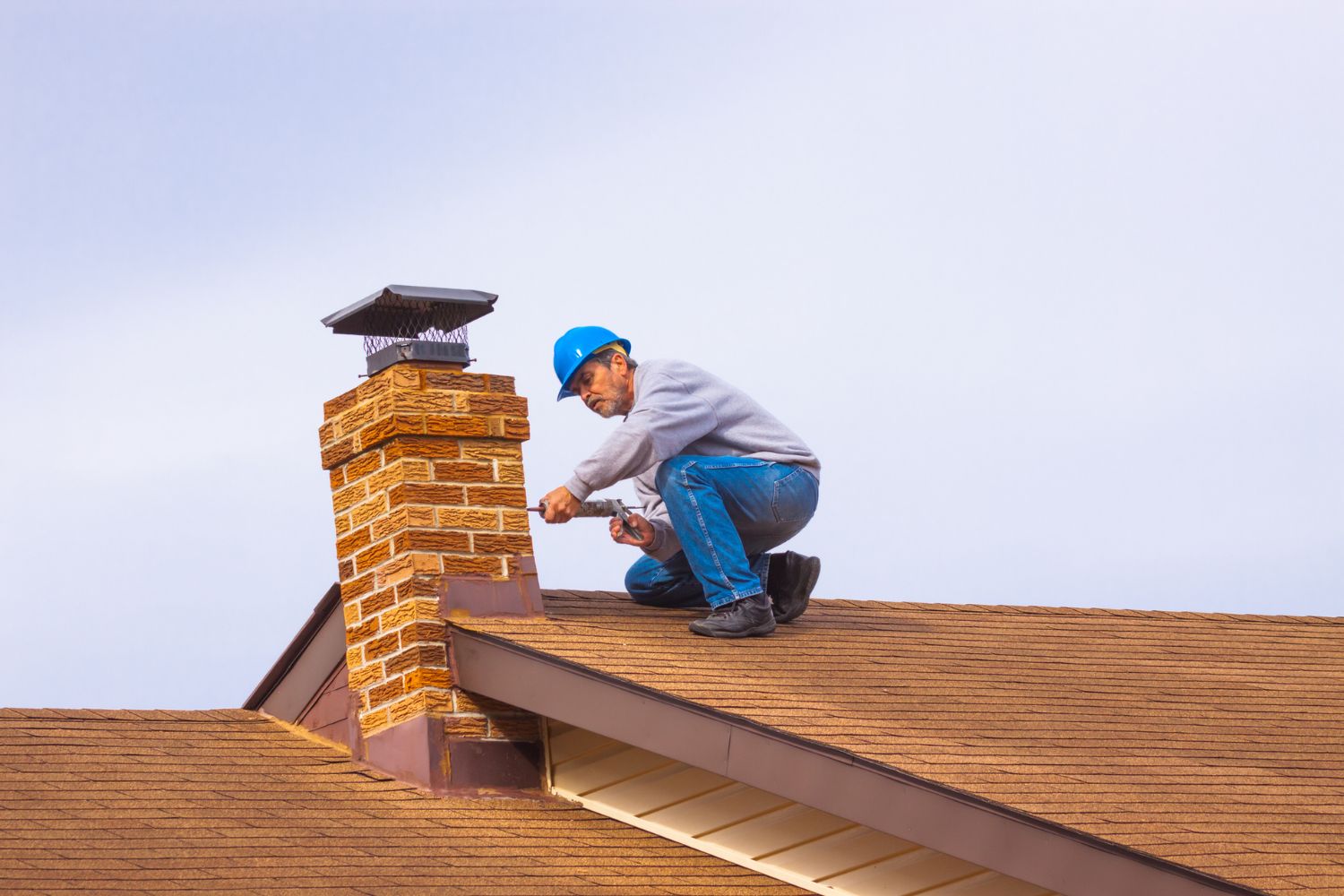
Do I Need Chimney Removal?
Removing a chimney isn’t a normal household maintenance project, so it may be difficult initially to see the benefit in paying for this service. However, if the goal is to increase the space within the home or update the existing fireplace, then chimney removal is a good option. Similarly, if there are existing issues with the current fireplace, such as chimney stack damage or moisture issues, removing the fireplace can help resolve these problems.
Home Renovation or Upgrade
Removing the chimney can be a good way to open up more space in the home. Depending on the type of chimney removal, the process typically involves removing the chimney structure brick by brick from the top to the bottom, then repairing the framing and drywall.
Older chimney structures tend to take up a lot of space in the walls, which can be reclaimed by removing the chimney. Alternatively, the old chimney structure can be replaced with an updated fireplace exhaust system, allowing the homeowner to upgrade the fireplace to an energy-efficient option.
Stack or Fireplace Damage
The best reason to remove a chimney is if the fireplace or chimney structure is damaged. Chimneys and fireplaces are designed to contain and control the heat and smoke produced when a fire is lit inside the fireplace, ensuring that harmful byproducts, like carbon monoxide, are vented to the outdoors.
However, if the chimney stack or fireplace is damaged, then the heat and smoke may not be managed properly, putting the home and the residents at risk. This is especially true for old brick chimneys, which may be at risk of collapsing if the chimney structure has not been repaired, repointed, or maintained.
Moisture Issues
Chimneys extend from the interior of the home to the roof, allowing the heat and smoke produced by burning wood or gas to escape into the air. Flashing is used to seal the roof where the chimney exits the home, but if the roof, chimney structure, or flashing are in poor condition, then this point can become a source of ongoing moisture issues.
Moisture problems can also be caused by a buildup of condensation inside the chimney. This may occur if a gas furnace or water is vented through an old chimney or if the chimney liner is cracked. If the fireplace and chimney are not regularly used, then it may be better for a homeowner to pay to have the chimney removed instead of repaired to avoid further moisture issues.
Safety Issues
Another reason for a homeowner to get rid of an existing chimney is if there are any safety issues that could put the home or the residents at risk. For instance, if the fireplace or chimney is in such poor condition that there is an increased risk that the chimney will collapse, then it’s recommended that the homeowner have the chimney removed as soon as possible before the issue can get worse. Similarly, cracks in the firebox can lead to structural damage, carbon monoxide intrusion, and increased risk of fire.
Even if the chimney structure is in relatively good condition, it still needs to be properly maintained. Failure to regularly clean and maintain the fireplace and chimney can cause highly flammable substances, like soot, tar, and creosote, to build up on the inside of the chimney. If the homeowner cannot keep up with maintenance or the chimney is in poor condition, it’s better to remove the chimney than put the home and residents at risk.
Extensive Energy Loss
A fireplace can help the homeowners and residents stay warm and toasty during the colder months of the year, and it can add a traditional aesthetic appeal to the interior of the home. However, fireplaces are not energy-efficient additions, so there is a high chance that having and using the fireplace are actually costing more to heat the home than they would if the fireplace and chimney were removed.
According to the U.S. Department of Energy, fireplaces typically operate at a 5 percent to 15 percent efficiency rate, losing a significant amount of heat up the chimney. When the fireplace isn’t being used, the home can still lose heat through infiltration and conduction. If the fireplace isn’t regularly used, it may be time to remove the fireplace and chimney structure—or, at the very least, look into chimney cap costs to help reduce the amount of energy being lost out the chimney.
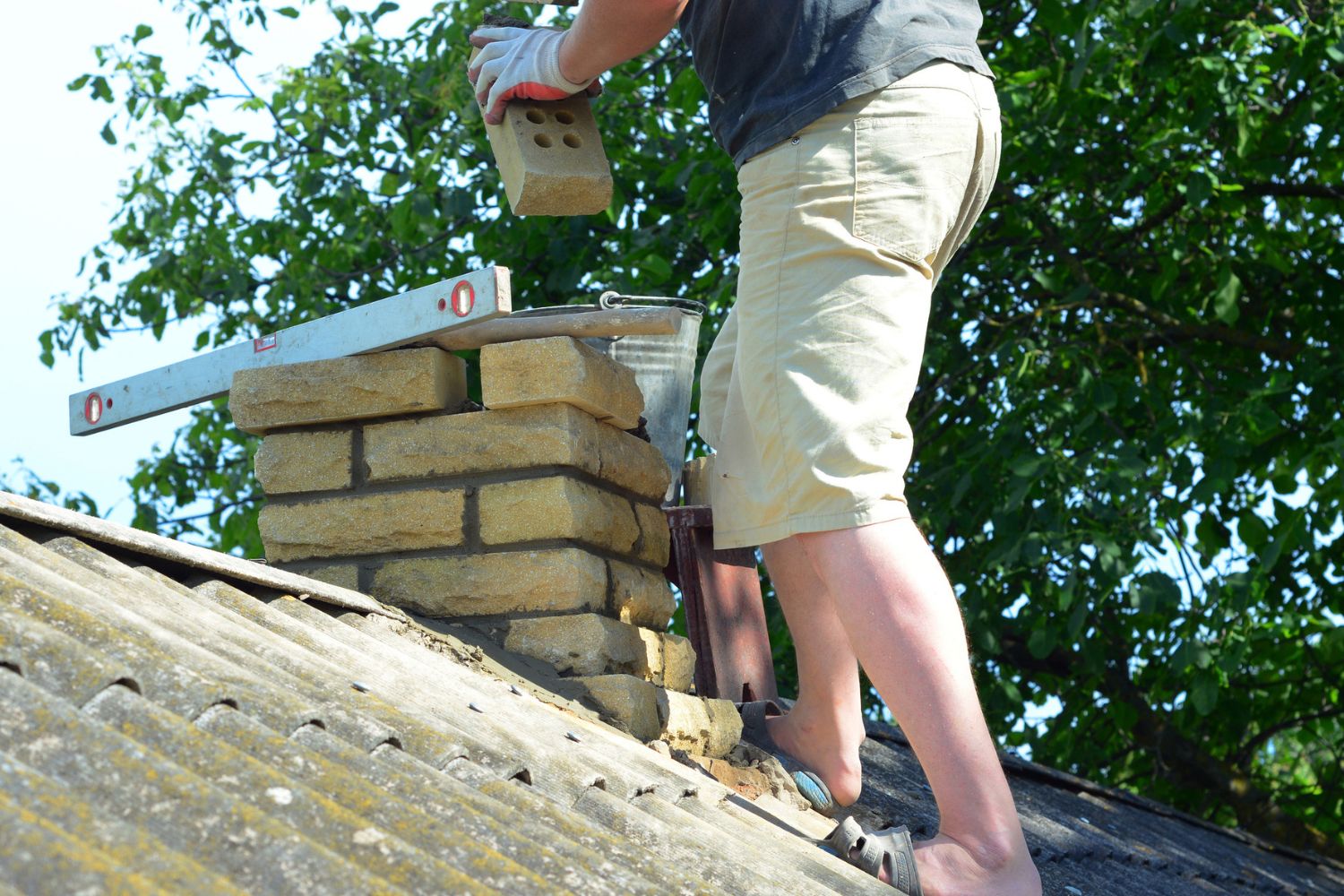
Chimney Removal: DIY vs. Hiring a Professional
There is a high risk to the home and to the DIYer when chimney removal is managed by an inexperienced and untrained individual. This is because the chimney is typically supported by load-bearing walls within the home. If an inexperienced individual attempts to brute force their way through this project, there is a chance that the chimney may collapse or that the structure of the home could be negatively impacted.
While the cost to repoint chimney structures or remove chimneys can seem high, it’s due to the time, effort, and skill involved in completing this work safely. Homeowners will want to put together a budget that can cover the chimney removal or brick chimney repair cost. Instead of tackling the job as a DIY project, it’s recommended that homeowners research several local chimney demolition or repair companies that can handle the job. The trained and experienced demolition experts know how a chimney works and will ensure that all necessary precautions are taken during the renovation project.
How to Save Money on Chimney Removal Cost
Maintenance and renovation projects have the benefit of improving the look and function of the home, but they can be costly investments that put a strain on the wallet. The cost to tear down chimney structures can range from $1,000 to $10,000 on average, so it’s important to figure out how to cut costs to keep the project within budget. Consider the following options to help reduce the cost of the chimney removal project.
- Get multiple quotes. Chimney removal and repair are not common tasks, so before booking an appointment, homeowners are advised to research and get quotes from at least three reputable companies to help ensure you get a fair rate for the job.
- Book early or late in the year. Any outdoor work tends to be completed during the warmer months of the year, which can increase the cost of the project. To get the best rates, schedule the chimney removal for early spring or late fall, when the demand for this type of work is low.
- Repair or repoint instead of removing. When the chimney starts to show signs of aging, the first instinct may be to remove the chimney before it can cause further problems. However, if the fireplace and chimney are still in relatively good condition, then it may be more cost-effective to have the structure repaired or repointed, instead of removed.
- DIY framing and drywall repairs. While the bulk of the chimney removal project should be left to trained professionals, the homeowner may be able to reduce the cost of the project by handling the framing and drywall repairs as a DIY project.
Questions to Ask About Chimney Removal
Before homeowners sign any contracts or agree to the quoted cost to remove a chimney, it’s important to learn more about the chimney removal company and the chimney removal process and to get a thorough breakdown of the chimney removal cost. Additionally, it’s recommended that they verify that the company is licensed and insured for this type of work. To ensure that the job will be completed properly and that the chimney removal or chimney repair cost is fair, it’s a good idea for homeowners to ask the following questions before starting the project.
- How long have you been in business?
- Can you provide references?
- Are there any current lawsuits or serious complaints pending?
- Are you insured, licensed, and bonded?
- Do you offer chimney repair or repointing services?
- Do you have a structural engineer on staff to ensure the safety of the project?
- How many workers will be assigned to complete the project?
- Are you certified by the Chimney Safety Institute of America (CSIA)?
- Will the entire chimney be removed, or will a portion be sealed off?
- How will you clean up at the end of the project?
- How will additional charges be handled?
- How will you resolve contractual disagreements?
- Can you provide a list of past client referrals?
- Will you obtain the permits for the job?
- When can you start, and what is the projected timeline for completion?
- Do you provide a written quote?
FAQs
Homeowners who hire a demolition crew without having as much information as possible about the work may end up paying inflated chimney replacement costs or hiring a company that doesn’t have the experience or skills to handle the job. Homeowners can find out more about chimney removal by checking out the answers to some of the most frequently asked questions below.
Q. How do I remove a chimney?
A chimney is typically removed by demolishing the structure one brick at a time from the top down. The roof can then be patched and sealed to prevent moisture from entering the building. At this point, it’s up to the homeowner and the chimney removal experts to decide whether to remove the rest of the chimney from the interior of the home or to simply seal it up. If the rest of the chimney and firebox are removed, the walls and ceilings will need to be patched to complete the renovation.
Q. Is it a good idea to remove a chimney?
The cost to remove chimney structures from the home can be daunting, but there are several good reasons to consider removing a chimney, including adding additional space to the home, upgrading the fireplace, removing a source of moisture buildup, and getting rid of the potential hazard a collapsing chimney can pose.
Q. Can I remove the chimney by myself?
It may be tempting to attempt to remove a chimney as a DIY job to help keep the chimney stack removal cost low, but this isn’t recommended. There is a chance that the chimney stack could collapse during removal and that the home could be affected if the job isn’t handled correctly. Instead, plan and put together a budget to handle the chimney demolition cost, and then hire a trained and experienced team to complete the work.
Q. Is it OK to block unused chimneys?
Instead of paying for chimney demolition, the unused chimney can just be blocked, as long as it is done correctly. If the chimney is not properly blocked, moisture-related problems, like mold, mildew, and rot, can result. Additionally, blocked-off chimneys will still need to be maintained, cleaned, and vented.
Q. Can I take down a chimney without a permit?
In most locations, a permit is needed before homeowners remove a chimney, so it’s important to factor in the additional permit fees for exterior chimney removal. Typically, the professional chimney removal service workers will obtain the permit, though it’s a good idea to verify this before starting the project.
Q. Do I need a permit to build a chimney?
Before replacing a chimney, it’s necessary for the builder to get a construction permit for the work. This may require submitting architectural drawings before the permit is issued and securing final approval from a local building inspector after construction.
Sources: HomeAdvisor (1, 2, and 3), Angi (1 and 2), HomeGuide

